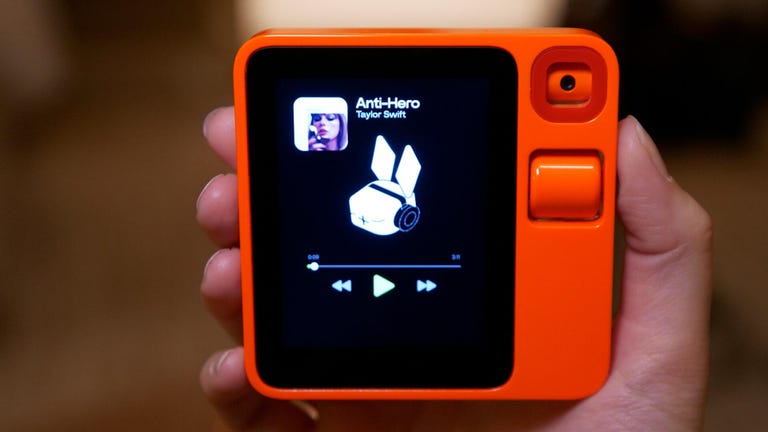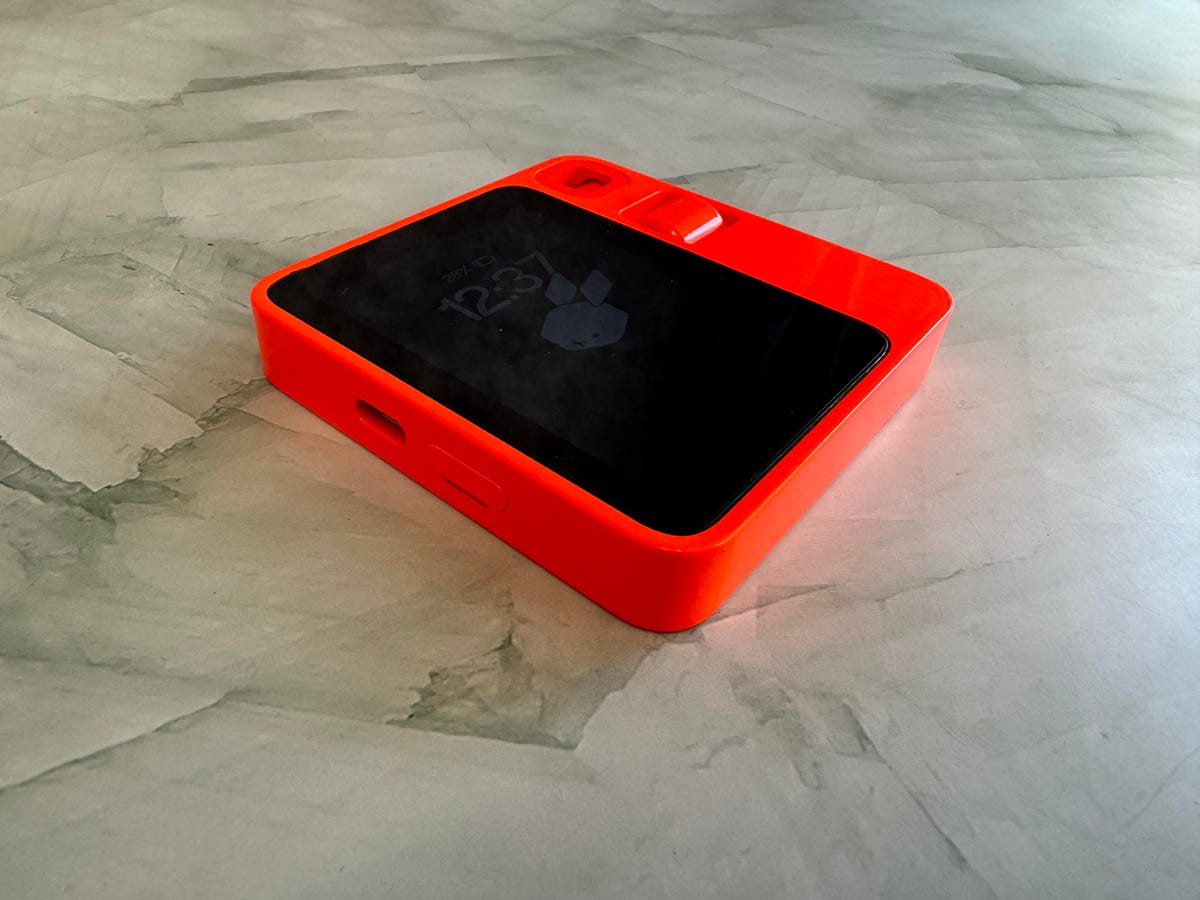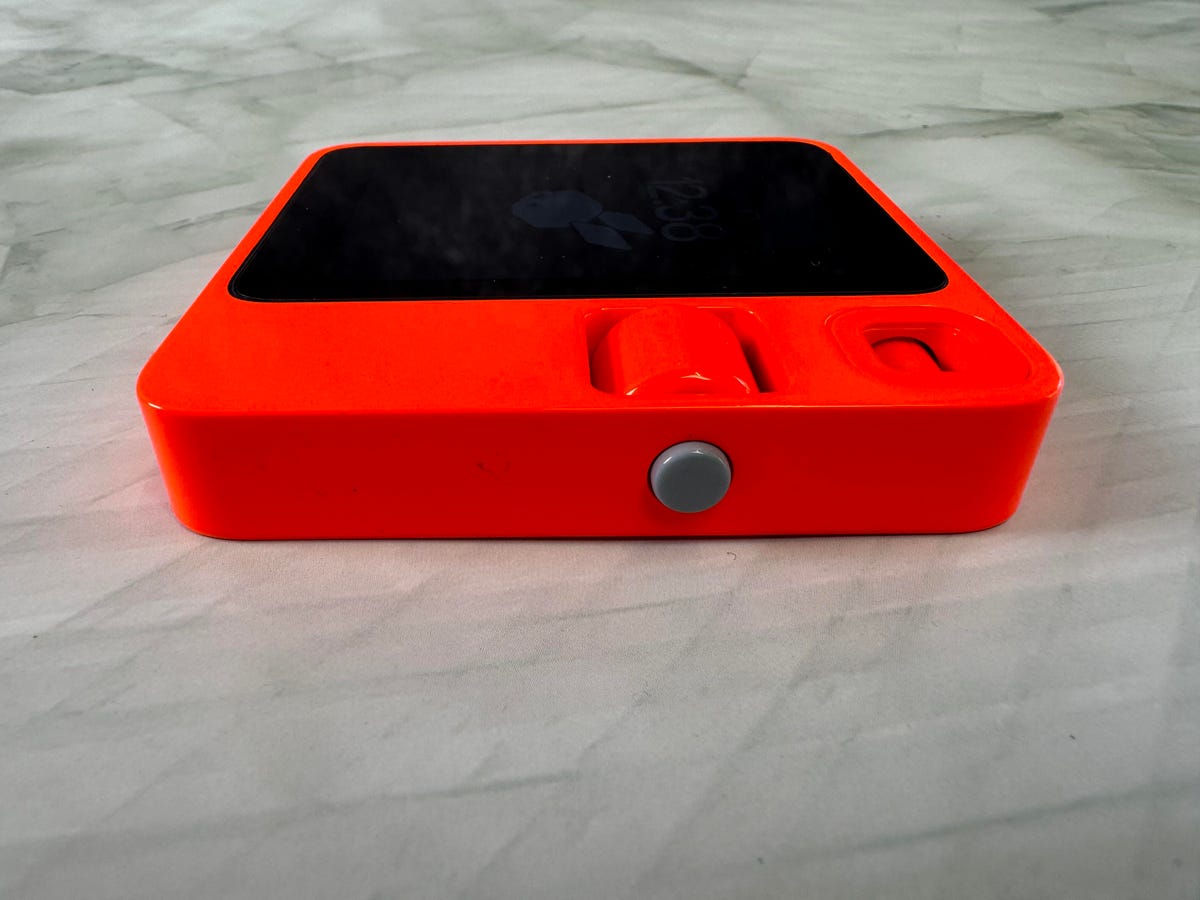Jesse Lyu, founder and CEO of Rabbit Inc., compares his company’s first product — the Rabbit R1 — to a Pokedex. After using it for just one day, I’m beginning to understand why.
Like the fictional Pokedex can identify Pokemon (creatures from the popular cartoon, video game and card game franchise of the same name), the Rabbit R1 can identify items in its environment. Point it at a plant, and it can tell you what kind it is. Aim it at your lunch, and it can tell you what’s in it.
Like the Pokedex, it also feels a bit like a novelty so far. The Rabbit R1, despite its tiny size and simple design, claims to do a lot of things. It can call an Uber, order dinner from Doordash, translate conversations, record voice memos, play songs from Spotify and more. Your phone can already do all of those things, but Lyu is promoting the Rabbit R1 as a faster and more natural way to do so.
Rabbit is far from being the only company trying to change the way we interact with devices. There’s the Humane AI Pin, another mini-gadget that uses artificial intelligence and a camera to answer questions and help you get things done. That device was criticized by reviewers for its high price, limited functionality and tendency to overheat. The Ray-Ban Meta Smart Glasses also have multimodal AI, meaning the eyewear can “see” what you see and tell you about it.
So far, the Rabbit R1 feels fun, fresh and interesting, but also frustrating at times. It intrigues me, but it also hasn’t convinced me yet that there’s room for another gadget in my life.
Here’s what I’ve been using the Rabbit R1 on my first day. I’ll have more to say in my full review after I’ve spent more time with it.
Read more: AI Is Changing Our Phones, and It’s Just Getting Started


The Rabbit R1 is roughly half the size of a smartphone.
The Rabbit R1 is a handheld device about half the size of a phone. It has a 2.8-inch screen, a scroll wheel for navigation, an 8-megapixel camera, 128GB of storage, GPS and accelerometer and gyroscope sensors for motion sensing.
On paper, that makes it sound like a phone from more than 10 years ago, but it’s what’s on the inside of the R1 that matters. Instead of a traditional operating system with apps, the R1 runs on what the company calls a “large action model.” It’s software that’s been trained to use digital services like a human would, similar to how a large language model provides conversational answers that may sound like a person wrote them. As such, you primarily interact with the R1 by speaking to it instead of swiping and scrolling through apps and menus. However, there is a keyboard for when you need to do things like enter a Wi-Fi password.
Lyu has big ambitions for where this Rabbit OS software can go. In a demo, he’s been able to book almost an entire vacation just by speaking a few simple sentences to the R1, such as by asking it to find flights and telling it his preferences. On day one, the Rabbit R1 is more limited. Many of the things it can do today feel smartphone-esque, like asking for the weather or playing songs on Spotify.
It takes some getting used to. Years spent tapping, swiping and scrolling will make you forget how to do almost anything else. Sometimes it’s refreshing to discover how to use a tech product for the first time, and at other times it’s frustrating. Yesterday morning, for example, I asked it to play Taylor Swift on Spotify before leaving the house, just to make sure it worked. The good news: it worked; the bad news: I couldn’t get it to stop. It took a few frantic presses of the side button before I finally got it to quiet down.
Visual search is the most interesting feature so far

You can press and hold the Rabbit R1’s side button and speak into it like a walkie-talkie.
So far, I’ve used the Rabbit R1 to take voice memos, translate speech from Spanish to English, and answer basic questions about things like weather forecasts. These features work as expected for the most part, and I’ll have more to say about them when I’ve spent more time using them. Your queries and visual searches, along with the services your device is connected to (like Spotify), all live in an online hub called the Rabbit Hole, which you set up when activating the device.
I’ve also noticed a few hiccups after my first day of use. The biggest of which has to do with ending a task and going back to the Rabbit R1’s home screen. Pressing the side button is supposed to put the R1 in standby mode, but there were multiple occasions in which nothing happened — especially when trying to stop Spotify. This made it frustrating to use at points.
The battery also drained absurdly fast, going from 98% at around 9 a.m. to 34% by 1:41 p.m. It died before I left the office around 5 p.m., even though I had topped it off a bit in the afternoon.
I’ll have more thoughts and impressions to share in my review of the Rabbit R1, which I’ll be writing after I’ve had more time with it.


